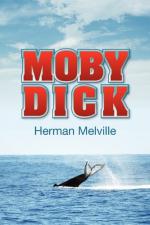But there are other instances where this whiteness loses all that accessory and strange glory which invests it in the White Steed and Albatross.
What is it that in the Albino man so peculiarly repels and often shocks the eye, as that sometimes he is loathed by his own kith and kin! It is that whiteness which invests him, a thing expressed by the name he bears. The Albino is as well made as other men— has no substantive deformity—and yet this mere aspect of all-pervading whiteness makes him more strangely hideous than the ugliest abortion. Why should this be so?
Nor, in quite other aspects, does Nature in her least palpable but not the less malicious agencies, fail to enlist among her forces this crowning attribute of the terrible. From its snowy aspect, the gauntleted ghost of the Southern Seas has been denominated the White Squall. Nor, in some historic instances, has the art of human malice omitted so potent an auxiliary. How wildly it heightens the effect of that passage in Froissart, when, masked in the snowy symbol of their faction, the desperate White Hoods of Ghent murder their bailiff in the market-place!
Nor, in some things, does the common, hereditary experience of all mankind fail to bear witness to the supernaturalism of this hue. It cannot well be doubted, that the one visible quality in the aspect of the dead which most appals the gazer, is the marble pallor lingering there; as if indeed that pallor were as much like the badge of consternation in the other world, as of mortal trepidation here. And from that pallor of the dead, we borrow the expressive hue of the shroud in which we wrap them. Nor even in our superstitions do we fail to throw the same snowy mantle round our phantoms; all ghosts rising in a milk-white fog—Yea, while these terrors seize us, let us add, that even the king of terrors, when personified by the evangelist, rides on his pallid horse.




